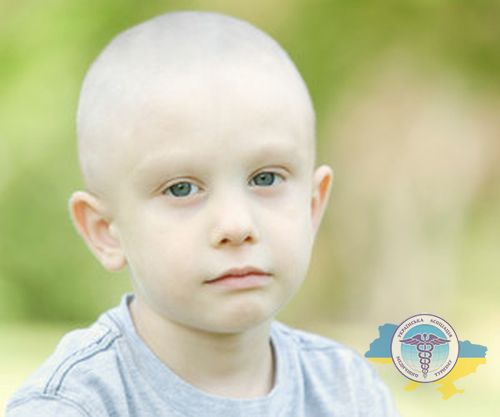Treatment of leukemia in German clinics

Leukemia (blood cancer) is an oncological disease of the circulatory system. This disease causes mutations in the bone marrow, which is responsible for the production of white blood cells, red blood cells and platelets. Defective cells begin to divide chaotically and displace healthy blood components. Due to disruption of the hematopoietic process, anemia and weakened immunity develop.
Leukemia treatment in Germany is famous for its high-tech medicine and innovative therapeutic methods. Thanks to this, survival rates in German hematology clinics remain among the highest in the world.

Want to know how much the treatment costs?
Answer a few questions and get preliminary information about the cost of diagnosis and treatment!
Advantages of leukemia treatment in Germany
To effectively combat this type of pathology, advanced technologies, innovative techniques and the highest professionalism of doctors are needed. That is why many patients from all over the world choose German clinics to fight hematological tumors.
European medicine is a leader in the field of hemato-oncology due to the following factors:
- Strict quality control. All treatment programs comply with international standards and recommendations of leading specialized associations. Their quality is constantly monitored by independent experts, as well as government health authorities.
- Use of certified drugs from global pharmaceutical companies. Medicines undergo multi-level control at all stages of production and delivery to clinics.
- Widespread use of hematopoietic stem cell transplantation for various forms of leukemia and lymphoma. The HSCT procedure has been perfected in German centers thanks to extensive experience in its implementation.
- Highest professionalism of hematologists and bone marrow transplantation specialists. Many of them are European and world-class experts and authors of scientific works on the fight against cancer.
- Advanced diagnostic base. The most modern research methods are used: multicolor flow cytometry, fluorescent In Situ hybridization, real-time PCR, high-precision cytogenetic research and others. This allows you to detect minimal manifestations of the disease and diagnose relapses at the earliest stages.
- Conducting multidisciplinary consultations with the participation of experienced hematologists, transplantologists and radiologists. For everyone who seeks help in German clinics, a personalized course is developed, taking into account the characteristics of the disease and associated factors.
- Integrated approach. It includes high-intensity induction therapy, consolidation of remission, a supportive program to prevent relapse, and rehabilitation. At each stage, the patient is closely monitored by a multidisciplinary team of specialists.
- High rates of overall and disease-free survival in both adults and children. According to leading centers, the 5-year survival rate for leukemia treatment in Germany reaches 60-80%, and for chronic forms - over 90%.
Diagnostics of blood cancer in German clinics
Unfortunately, in the early stages, the symptoms of the disease are often nonspecific or subtle. Therefore, doctors should be wary and prescribe the necessary set of examinations to exclude or confirm the diagnosis.
Timely and accurate diagnosis of leukemia in Germany is a critical step on the road to recovery. Establishing the correct diagnosis allows you to choose the optimal plan of action and increase the chances of a favorable outcome.
The main methods for diagnosing this type of oncology include:
- Blood test. Primary diagnosis often begins with a general analysis with a leukocyte count. This is a simple and accessible test that allows you to identify deviations in the composition of biomaterial characteristic of the disease in the early stages.
- Bone marrow biopsy. The procedure for collecting a bone marrow sample for further microscopic examination. This is the “gold standard” of diagnosis, which allows you to accurately verify the diagnosis and determine the type of cancer and the stage of development of the tumor process.
- Genetic testing. Modern methods for identifying specific genetic mutations and chromosomal aberrations that play a key role in the pathology of hematopoiesis. This type of research is critical for selecting treatment for blood cancer in Germany.
- Radiation diagnostics. Non-invasive imaging methods (CT, MRI, PET and scintigraphy) can identify tumor foci, metastases and changes in internal organs.
- Immunophenotyping. Analysis of specific markers on the surface of tumor material. This diagnostic technique provides important information for accurate classification of the type of disease and the stage of cell differentiation.
Methods of treating blood cancer in Germany

New techniques and therapeutic programs have significantly improved the effectiveness and increased the life expectancy of cancer patients. A disease that was previously considered tantamount to a death sentence can now be successfully cured.
Chemotherapy
Chemotherapy is based on the use of special drugs - cytostatics, which suppress the growth of tumors. This method allows you to achieve remission in many types of leukemia, but often causes side effects due to the toxicity of the drugs.
In German medicine, modern chemotherapy regimens using the latest drugs are used to reduce the negative effects of drugs and increase their effectiveness. The therapeutic course strictly complies with international protocols and is selected individually for each patient, taking into account the characteristics of the disease.
Immunotherapy
The essence of therapy is to stimulate the body's own defenses and activate the immune system to effectively combat pathologies. Modern immunotherapy drugs are able to detect pathologies that are usually masked by the immune system. This opens up new possibilities for complex cases of cancer.
Clinics are actively conducting research in this promising area, developing and testing new immune drugs and combination regimens with chemotherapy. The main goal is to achieve maximum oncolytic effect with a minimum of side effects, in order to qualitatively prolong the life of cancer patients.
Radiation therapy

Radiotherapy has dual uses in hematopoietic diseases. Typically, it is used to combat emerging tumors caused by the proliferation of leukemia cells. Irradiation helps to reduce the size of the tumor and prevents its further growth and metastasis.
Also, this technique is used as a preventive measure to protect vital organs from damage by the leukemic process. In particular, in German medical institutions, brain irradiation is mandatory to prevent damage to the nervous system.
Targeted therapy
This is a modern method based on high-precision effects on molecular targets inside a malignant formation. Due to its accuracy, such therapy is significantly less toxic to the body and is better tolerated by patients compared to traditional chemotherapy.
Targeted drugs have already shown high effectiveness for a number of diseases. Increasingly, active development of innovative drugs with an improved safety profile and oncolytic potential is being carried out to expand the arsenal of personalized programs.
Bone marrow transplantation

Allows you to replace damaged bone marrow with healthy one and completely restore the functioning of the hematopoietic system. German clinics have a developed infrastructure for performing BMT - specialized departments for selecting donors, procuring and storing donor material.
Before BMT, the patient undergoes immunosuppressive training to suppress his own bone marrow and create a niche for graft engraftment. The procedure itself is reminiscent of a transfusion - donor material is introduced into the recipient’s bone marrow through the bloodstream and hematopoiesis is started. This makes it possible to achieve stable remission even in severe recurrent forms of the disease.
Leukapheresis
This is an auxiliary technique used in the later stages of the disease, when an excessive number of leukemia cells accumulate in the body. The essence of the method is the extracorporeal removal of part of the leukocytes using special equipment - leukapheresis.
The procedure allows you to reduce the leukemic load on the body, reduce the manifestations of intoxication and the severity of the patient’s condition. Unfortunately, this method has only a temporary symptomatic effect, however, it gives patients and doctors additional time to select the optimal therapeutic tactics.
Monoclonal antibodies
Monoclonal antibodies are immune molecules that can recognize certain antigens with high specificity. In oncology, they are used to target a cancer tumor.
Antibodies to CD20, CD30 and CD52 antigens are actively used in lymphoproliferative diseases, including various forms of blood cancer. They bind to the target on leukemia cells and trigger immune responses to eliminate them - complement-mediated lysis, antibody-dependent cellular cytotoxicity and other mechanisms.
Trojan Horse
This is an innovative approach based on deceiving cancer cells. A tumor needs certain nutrients to grow. The method involves administering a drug that tumor cells mistake for a nutrient. By accumulating this drug inside, they undermine their own survival mechanisms and die.
Maintenance therapy
Maintenance therapy in the treatment of leukemia in Germany plays an important role in a comprehensive approach to the disease. It includes measures to prevent and combat infections, support the immune system, as well as eliminate unpleasant symptoms of the disease and side effects. Thanks to her, even cancer patients with severe immunosuppression can successfully achieve recovery.
What forms of leukemia are treated in clinics in Germany?
Currently, German clinics successfully diagnose and treat almost the entire range of blood diseases, using a set of innovative techniques. Treatment of leukemia in German clinics requires a personalized approach, taking into account the molecular genetic characteristics of the tumor.
Acute leukemia
Treatment of acute leukemia in Germany requires a special approach, which depends on the type of disease, its clinical manifestations and degree of malignancy:
- Acute lymphoblastic leukemia (ALL). This type of disease occurs due to mutation and uncontrolled proliferation of immature lymphoid progenitor cells. It is more common in children and is characterized by damage to the bone marrow, lymph nodes and internal organs. In case of relapses, the central nervous system may be involved.
- Acute myeloid leukemia (AML). Develops due to the accumulation of defective myeloid blasts. It occurs mainly in adults and has an aggressive course with a risk of hemorrhagic, infectious and neurological complications.
- Acute undifferentiated leukemia. Characterized by rapid, uncontrolled growth of primitive hematopoietic precursor cells. It is extremely difficult with high intoxication and fever, often with damage to the central nervous system.
Chronic leukemia
The danger of chronic hematopoietic pathologies lies in their latent course in the early stages, when symptoms are minimal or completely absent. It is impossible to predict when the tumor process will accelerate and the so-called blast crisis will develop, which can sharply worsen the prognosis. Therefore, early diagnosis is of fundamental importance.
The main forms of chronic leukemia include:
- Chronic lymphocytic leukemia (CLL). The most common type, more common in people over 50 years of age. Characterized by excessive accumulation of undifferentiated lymphocytes. It proceeds relatively benignly, but over time it can transform into an aggressive form.
- Chronic myeloid leukemia (CML). Occurs as a result of stem cell mutation and excessive proliferation of myeloid progenitor cells. Most often develops at the age of 20–40 years. It is characterized by a slow course with a gradual increase in symptoms.
- Polycythemia vera and myelofibrosis. Rare myeloproliferative neoplasms, which are characterized by an increase in the number of red blood cells and bone marrow fibrosis, respectively.
Features of treatment of childhood leukemia in Germany

Leukemia is the most common cancer in children; the acute lymphoblastic variant is predominantly found. Thanks to innovative techniques and approaches, remission can be achieved in more than 90% of cases, despite the aggressive course.
Children require a particularly careful approach due to the severe tolerability of the disease and psychological difficulties. Treatment of leukemia in children in Germany is carried out under the supervision of experienced psychotherapists, and comfortable conditions with educational and developmental materials are created in the wards.
German centers have also introduced special chemotherapy protocols for children with minimal toxicity. An integrated approach can significantly reduce complications and support both the physical and psycho-emotional state of the child during the healing process.
Cost of leukemia treatment in Germany
Leading oncology clinics achieve high cure rates for malignant blood diseases. In children under 15 years of age, recovery occurs in 90% of cases. In adults, this figure varies from 45 to 70% depending on the type of cancer.
The price of leukemia treatment in Germany is quite high, but it is justified by the use of innovative technologies and the latest anticancer drugs. The following are factors influencing the pricing of treatment programs for blood cancer:
- Age and general condition of the patient. The cost of treatment is higher for older people (over 60 years old) and for those who have chronic concomitant diseases (diabetes, cardiovascular pathologies, etc.). This is due to more intensive examination, the need to correct other pathologies, as well as longer recovery and rehabilitation.
- Stage and type of disease. Leukemia detected in the early stages (stages 1-2) is cheaper than in advanced stages (3-4), when a more aggressive and resource-intensive approach is required. The cost varies for different types of disease, depending on their course and prognosis.
- Required scope of examination. The more complex and high-tech methods used (PET, PCR or DNA sequencing), the higher the cost of diagnosis. The amount of chemotherapy, radiation therapy and bone marrow transplantation directly affects the overall price.
- Stay at the clinic. In a day hospital, treatment is cheaper than a 24-hour hospital, which includes the provision of a room and nursing care.
- Medicines. Newer targeted drugs and immunotherapy are much more expensive than standard chemotherapy regimens. The cost depends on the specific drugs prescribed, their dosages and terms of use.
- Rehabilitation. Recovery after intensive chemotherapy and especially bone marrow transplantation requires long-term rehabilitation with the cost of physical therapy, medications and dietary nutrition.
- Accommodation and meals for the patient and accompanying persons during the entire course. These household costs also need to be taken into account in addition to the cost of medical services.
Approximate prices in the best German cancer centers are given below:
| Procedure | Cost, euro |
|---|---|
| Consultation with a hematologist-oncologist | from 800 |
| Laboratory diagnostics | from 350 |
| PET-CT | from 1500 |
| Hospital (for 1 day) | from 800 |
| Chemotherapy course | 3500-5500 |
| Radiotherapy | from 5000 |
| Targeted therapy | from 3500 |
| Immunotherapy | from 5000 |
| Autologous transplantation | from 100000 |
| Transplantation from a related donor | from 200000 |
| Transplantation from an unrelated donor | from 250000 |
| Rehabilitation after transplantation | from 30000 |



